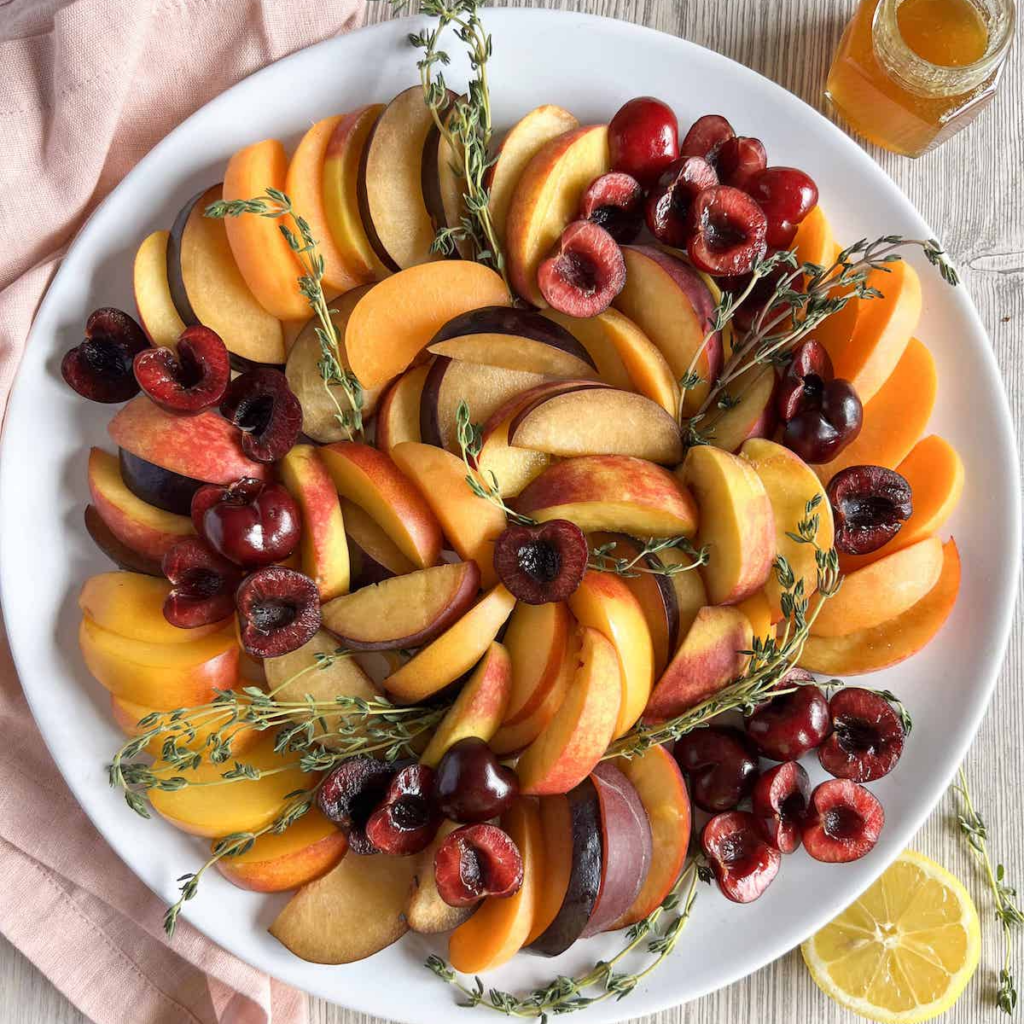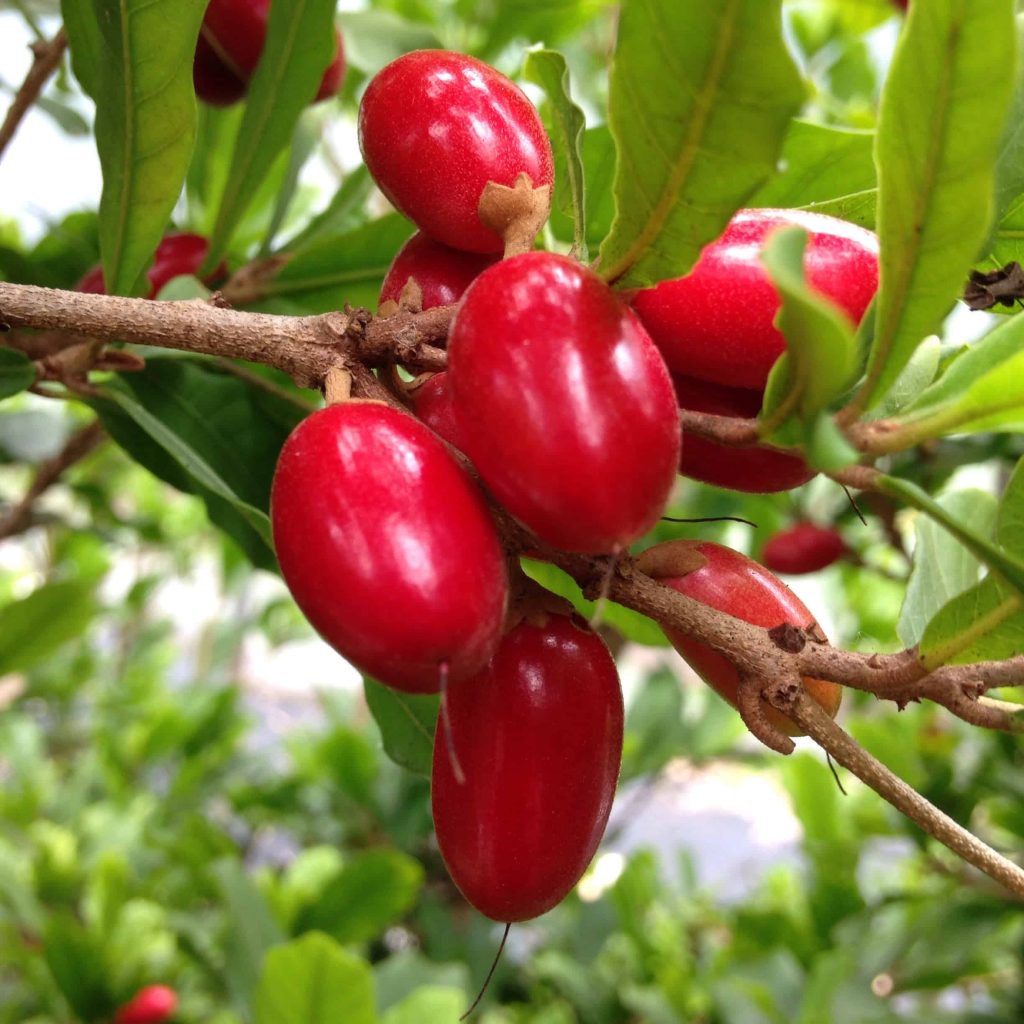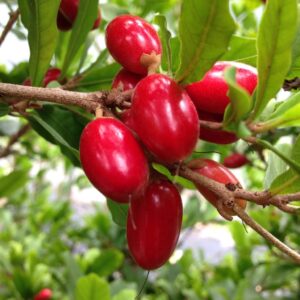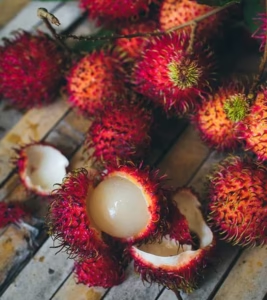Explore Fascinating FRUIT UNIQUE: Exotic Fruits to Try
Explore Fascinating FRUIT UNIQUE: Exotic Fruits to Try
Step into a world where every bite is a new surprise. India’s vibrant culture and diverse landscapes hide many fruit unique wonders. These exotic tastes are waiting to be discovered. From tropical jungles to bustling local markets, these rare fruits mix tradition with modern curiosity. Ready to explore flavors beyond the ordinary?
Key Takeaways
- India’s climate fosters growth of rare fruit unique varieties.
- Exotic fruits offer vitamins and minerals not found in common produce.
- Traditional dishes now feature fruit unique ingredients for bold new twists.
- Choosing fresh fruit unique supports sustainable farming practices.
- Global trends highlight fruit unique as a growing culinary adventure.
Introduction to the World of Exotic and Uncommon Fruits
Step into a world where nature’s creativity shines—exotic fruits are more than snacks. These treasures grow in far-off lands, each with its own story. From the spiky rind of a dragon fruit to the jewel-like hues of jabuticaba, they redefine what a fruit can be.
Many exotic fruits come from tropical places like Southeast Asia, the Amazon, or the Pacific Islands. Their journey to our tables shows our growing interest in unique flavors and nutrition. Think of mangosteen, the “queen of fruits,” or the sour-sweet burst of a physalis. Each offers a taste adventure.
- Dragon fruit: Pink skin with neon flesh
- Rambutan: Fuzzy red orbs hiding sweet flesh
- Jackfruit: Giant pods with a mild, banana-like flavor
Exploring exotic fruits means discovering new textures and aromas. They’re not just for eating—they connect us to diverse cuisines and sustainable farming. Ready to uncover their secrets? Let’s dive deeper.
The History and Cultural Significance of FRUIT UNIQUE in India
India’s love for rare fruits goes back centuries. They are seen as symbols of tradition and wellness. These fruits have played a big role in shaping Indian culture and diet.
From ancient Ayurvedic texts to today’s kitchens, they have been a part of our lives. Their journey from temple offerings to trendy superfoods shows India’s connection with nature.
Ancient Traditions and Modern Trends
Ancient Sanskrit texts praised rare fruits like amla and ber for their healing powers. Monks and royalty used them for rituals, believing they purified the body and spirit. Today, these fruits are easy to find in urban markets and online.
Chefs now use them in smoothies, desserts, and fusion dishes. This shows their lasting appeal.
Cultural Impact on Indian Cuisine
Rare fruits are key to festivals and local dishes. Think of a palka (star gooseberry) chutney at a family gathering or phalsa juices during Holi. Their bright flavors make street food and fancy restaurants special.
Here’s how they change meals:
- Seasonal availability drives local markets and farm-to-table movements
- Traditional recipes adapt to global tastes while honoring roots
- Cookbooks and social media highlight their cultural stories
“These fruits are more than ingredients—they’re stories of survival and innovation.” — Chef Priya Mehta, founder of Heritage Harvest
Nutritional Benefits and Health Perks of Exotic Fruits
Specialty fruits are more than just a treat. They are full of nutrients that help your body. Enjoying a tropical mango or a tangy star fruit gives you vitamins, minerals, and antioxidants. These boost your health.
Rich in Vitamins and Minerals
- Vitamin C in fruits like dragon fruit strengthens immunity and skin health.
- Pineapples and guavas offer potassium, supporting heart and muscle function.
- Fiber-rich options such as jackfruit improve digestion and steady energy levels.
Promoting Wellness and Vitality
Specialty fruits help fight fatigue and prevent disease. For example:
- Amla (Indian gooseberry) provides vitamin C for immunity and iron absorption.
- Mangosteens contain antioxidants that reduce inflammation and stress on cells.
- Jackfruit’s magnesium content aids sleep and nerve function.
Adding these fruits to your meals or snacks brings natural nutrients. They are a great choice for a balanced diet. Next time you shop, choose a specialty fruit to enhance your daily nutrition!
How to Identify and Select Rare Fruits with Confidence
Choosing the best uncommon fruits can seem hard, but it’s easier with these tips. First, check the skin for smoothness and no bruises. A fruit that’s slightly soft but not mushy is good. A sweet smell near the stem means it’s ripe.
- Look for vibrant natural colors—avoid overly pale or dark patches.
- Check weight: A ripe fruit feels heavier for its size.
- Ask vendors about origins—local sources often offer fresher options.
“Always prioritize firmness without hardness,” says Mumbai-based fruit exporter Ramesh Patel. “Smell is key—it should never smell fermented or sour.”
Indian markets like Delhi’s Khari Baoli or online sites like BigBasket now have uncommon fruits. Compare at farmers’ markets where growers share tips. Stay away from pre-wrapped fruits unless you trust the seller. With time, you’ll get better at picking quality fruits, making every buy a joy.
Top Exotic Fruits to Try and Their Unique Flavors
India’s food scene is all about trying new fruits. They bring a burst of flavors to our meals. Find out which fruits are in season and how to use them to make your food even better.
Seasonal Highlights
- Rambutan: This fruit is juicy and sweet, with a red skin. It’s at its best in summer. You can find it fresh at local markets.
- Dragon Fruit: It’s available all year in warm places. Its mild taste is great with yogurt or desserts.
- Mangosteen: It’s a summer favorite, with a tangy-sweet flesh. It’s perfect during the monsoon season.
Flavor Profiles and Pairings
Try mixing diverse fruits in your meals for exciting flavors:
- Rambutan’s creamy texture is amazing in fruit salads or as a biryani garnish.
- Dragon fruit adds a pop of color to smoothies or as a pancake topping.
- Mangosteen’s acidity balances out the richness in curries or desserts like kulfi.
Be adventurous with these flavors to create dishes that are both traditional and new. Whether it’s breakfast or a big celebration, these fruits will take your taste buds on a journey you won’t forget.
Spotlight on Specialty and Uncommon Fruits
India’s food culture is rich with distinctive fruits that amaze us. These fruits are found in jungles and markets. They offer more than taste; they share stories of tradition and innovation.
- Rambutan: A velvety-red fruit with a sweet, juicy interior, often called “dragon’s eye” for its striking appearance.
- Dragon Fruit: Bright pink skin with black seeds, grown in tropical climates and rich in antioxidants.
- Mangosteen: Known as the “queen of fruits,” its purple rind hides tangy-soft segments prized in Ayurvedic remedies.
| Fruit | Taste | Key Feature |
| Rambutan | Sweet, tropical | Unique texture and cultural symbolism |
| Dragon Fruit | Mild, refreshing | High vitamin C content |
| Mangosteen | Sour-sweet | Medicinal properties |
“These fruits aren’t just snacks—they’re gateways to exploring new tastes and health benefits,” says a Mumbai-based chef specializing in fusion cuisine.
Exploring distinctive fruits opens doors to culinary creativity. Their rarity makes them a hit at local fairs and gourmet stores. Next time you shop, look for these gems to elevate your meals!
The Rising Demand for Uncommon Fruits in the Indian Market
In India, one-of-a-kind fruits are getting a lot of attention. People want unique tastes and health benefits. This is why rare fruits like rambutan, dragon fruit, and horned melon are in demand.
This change shows how people’s tastes are evolving. They want foods that are not only tasty but also look good.
Consumer Trends and Preferences
Young people and health-focused buyers love one-of-a-kind fruits. They see them as nutritious and perfect for social media. Online stores like BigBasket and Grofers now have special sections for these fruits.
These platforms make it easy to find and buy exotic fruits. The main trends include:
- Organic and ethically sourced fruits are in demand
- Ready-to-eat fruit combos are popular
- There’s a growing interest in Ayurvedic fruits like amla and jamun
Influence of Global Flavors
“Globalization of taste has turned one-of-a-kind fruits into cultural bridges,” said a 2023 report by the Indian Fruit Merchants’ Association.
International flavors, like Thai and Mexican, are inspiring chefs. They use jackfruit in curries and carambola in salads. Supermarkets now carry dragon fruit all year, and local farmers are creating new varieties.
This mix of global and local tastes opens up new chances for everyone. As cities grow, so will the demand for these unique fruits.
Whether for health, fun, or to try new things, one-of-a-kind fruits are becoming a big part of India’s food scene.
Culinary Adventures: Recipes Using Distinctive and Exclusive Fruits
Turn exclusive fruits into unforgettable meals with these simple steps. Begin by exploring their bright flavors in new ways. This will show off their special qualities.
Refreshing Beverages and Smoothies
Make drinks with tropical tastes that are great for India’s hot weather:
- Dragon Fruit Cooler: Mix pink dragon fruit pulp with coconut water, lime juice, and honey. Serve over ice for a refreshing drink.
- Mango-Rambutan Smoothie: Blend ripe mango, sweet rambutan, yogurt, and cardamom powder. It’s a creamy twist on traditional lassi.
Innovative Desserts
Try new textures and flavors:
- Jackfruit Tart: Use young jackfruit (drained and shredded) for a custard filling in a buttery crust. Add sliced starfruit on top for crunch.
- Kiwi-Malai Kulfi: Add green kiwi puree and saffron to homemade kulfi. Decorate with edible flower petals for a stunning dessert.
Match dishes with local spices like cardamom or mint to balance sweetness. How you present matters—use colorful bowls or garnish with fruit slices for a great photo. You can find these exclusive fruits at Big Bazaar or local organic markets. Don’t be afraid to try new things—your taste buds will love it!
Expert Tips for Storing and Handling One-of-a-Kind Fruits
Keeping exotic fruits fresh is key to their taste and health. Follow these steps to keep your rare finds in top shape.
- Handle fruits gently to avoid bruising.
- Store in cool, dry spaces away from direct sunlight.
- Check regularly for overripening or spoilage.
- Temperature Control: Most tropical fruits do best at 50–60°F (10–15°C). Use crisper drawers for humidity control.
- Separate Ethylene Emitters: Fruits like mangoes release gases that speed ripening. Keep them apart from others.
| Fruit | Optimal Storage | Max Shelf Life |
| Rambutan | Refrigerate in perforated bags | 5–7 days |
| Dragon Fruit | Room temperature for 2 days, then fridge | 4–6 days |
| Durian | Cool, well-ventilated area (do not refrigerate) | 2–3 days |
Adjust techniques based on local climate. For example, in India’s warmer regions, refrigeration extends freshness longer. Always wash fruits just before eating to prevent mold.
Sustainability and the Environmental Impact of Exotic Fruit Cultivation
Choosing exotic fruits doesn’t mean ignoring the planet. Sustainable farming ensures these unique crops grow without harming ecosystems. Farmers in India are adopting practices that protect soil and water for future generations.
“Sustainable farming isn’t just good for the earth—it’s the future of agriculture.” – Farmers’ Collective of Tamil Nadu
Eco-Friendly Farming Practices
Many growers now use methods that reduce environmental harm. These include:
- Organic fertilizers and pesticides to avoid chemical runoff.
- Water-saving drip irrigation systems.
- Planting native species alongside exotics to boost biodiversity.
Supporting Local Producers
Buying from local farmers cuts transportation emissions and keeps profits in communities. Look for certifications like APEDA’s organic labels. Small-scale growers in regions like Kerala and Karnataka often use sustainable techniques. By choosing their products, you help preserve traditions and ecosystems.
Every purchase can drive positive change. Opt for farms committed to eco-friendly methods and local partnerships. Together, we can enjoy exotic fruits while protecting the environment.
Innovations in the World of Diverse Fruits and Specialty Crops
Technology is changing farming for exotic fruits. It brings AI tools and smart irrigation systems. These modern methods make farming quicker and more efficient.
Technological Advances in Agriculture
Drones and sensors track plant health now. AgriTech Solutions uses drones in Karnataka to cut water use by 30%. In Maharashtra, smart greenhouses use AI to improve yields.
- AI-based apps predict pest outbreaks
- Automated irrigation cuts water waste
- Blockchain tracks produce from farm to table
Future Trends in Fruit Production
Future farms will be climate-friendly. Vertical farms and lab-grown fruit are becoming popular. Here’s what’s coming:
| Trend | Impact |
| Vertical farming | Space-saving urban growth |
| Climate-smart crops | Resistance to extreme weather |
| Lab innovations | Year-round fruit availability |
These changes will bring tastier, sustainable fruits. They will also support local farmers. As technology advances, India will enjoy unique flavors and eco-friendly farming.
Conclusion
Exploring exotic fruits like dragon fruit, rambutan, and jackfruit is a journey of tradition and taste. These fruits are not just snacks; they’re full of vitamins and cultural stories. They’ve become a colorful part of India’s food scene, from ancient recipes to modern smoothies.
By choosing these fruits, you support eco-friendly farming and local growers. This choice helps ensure a sustainable future. As Indians look for healthy, new flavors, every purchase helps both their well-being and the environment.
Next time you shop, pick a unique fruit and try a new recipe. Enjoy the mix of global trends and local roots. Your plate and the planet will thank you!
FAQ
What are some exotic fruits I should try?
You should try rare fruits like rambutan, dragon fruit, and jackfruit. They offer unique tastes and textures.
How do I know if a specialty fruit is ripe?
Check for color, firmness, and aroma to tell if a fruit is ripe. For example, a ripe mangosteen is heavy and slightly soft.
Are there any health benefits associated with eating distinctive fruits?
Yes! Exotic fruits are full of vitamins, minerals, and antioxidants. Acai berries, for example, are known for their high antioxidant levels.
Where can I find unique fruits?
Look for them at local farmers’ markets, specialty stores, and international markets. Online retailers also have a variety of fruits.
How should I store one-of-a-kind fruits to ensure freshness?
Store them in a cool, dry place. Some fruits, like starfruit, should be refrigerated. Others need to ripen at room temperature first.
Can you suggest recipes that highlight specialty and uncommon fruits?
Sure! Make a smoothie with passion fruit and banana, or a tropical salad with dragon fruit. These dishes highlight their unique flavors.
What should I look for when purchasing exotic fruits?
Look for freshness, avoid blemishes, and smell them. Talking to local vendors can also help find the best varieties.
How do global flavors influence the popularity of uncommon fruits today?
Global cuisine has made people appreciate more diverse fruits. Chefs and home cooks are using these fruits in new ways, adding to dishes.












Post Comment